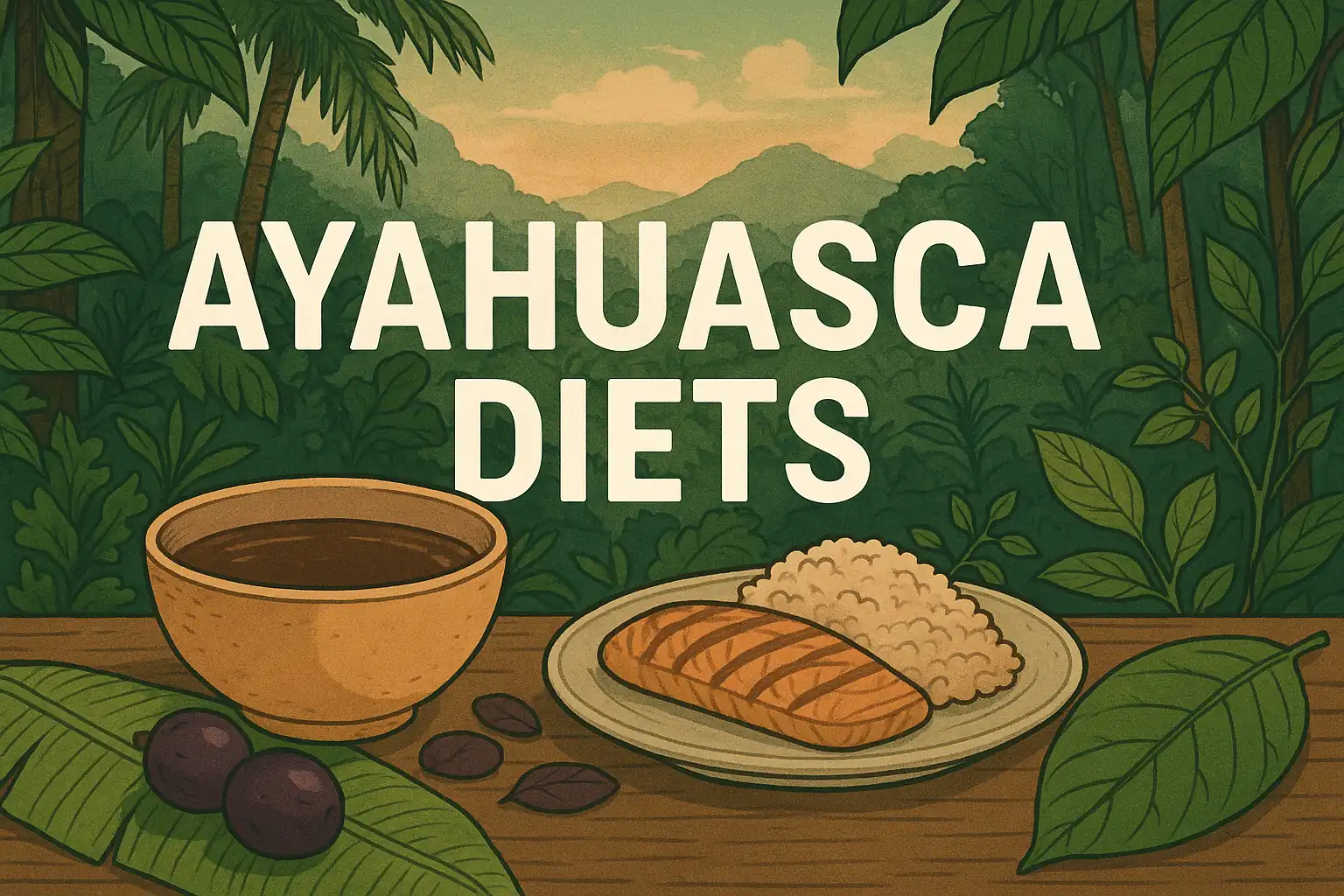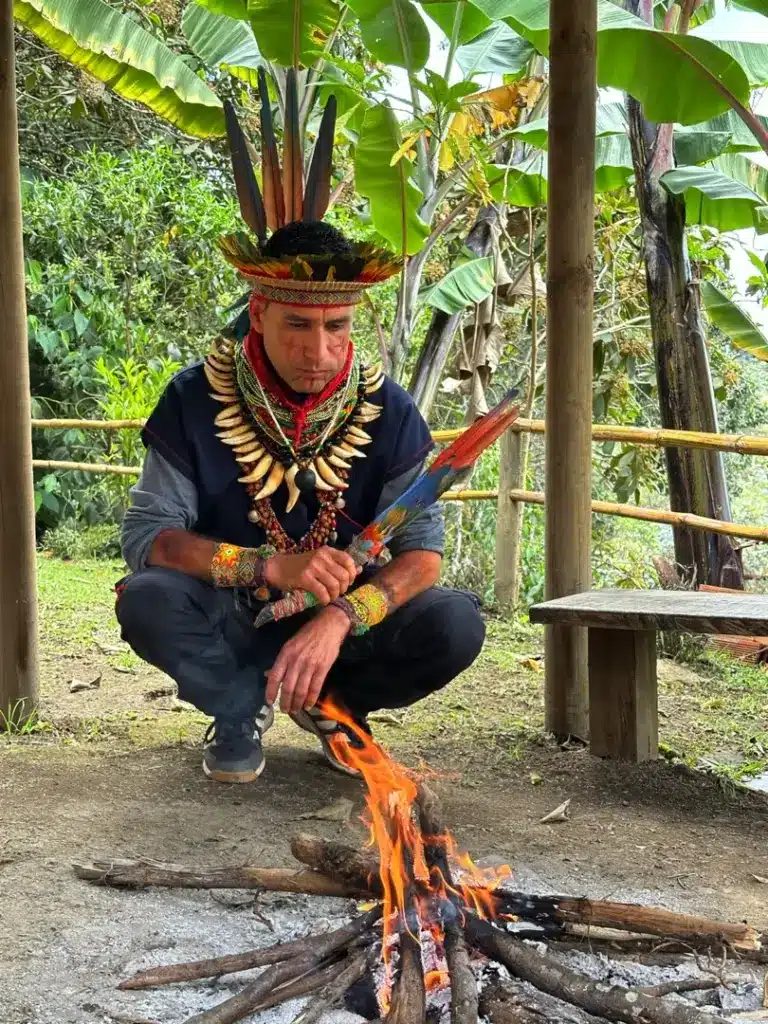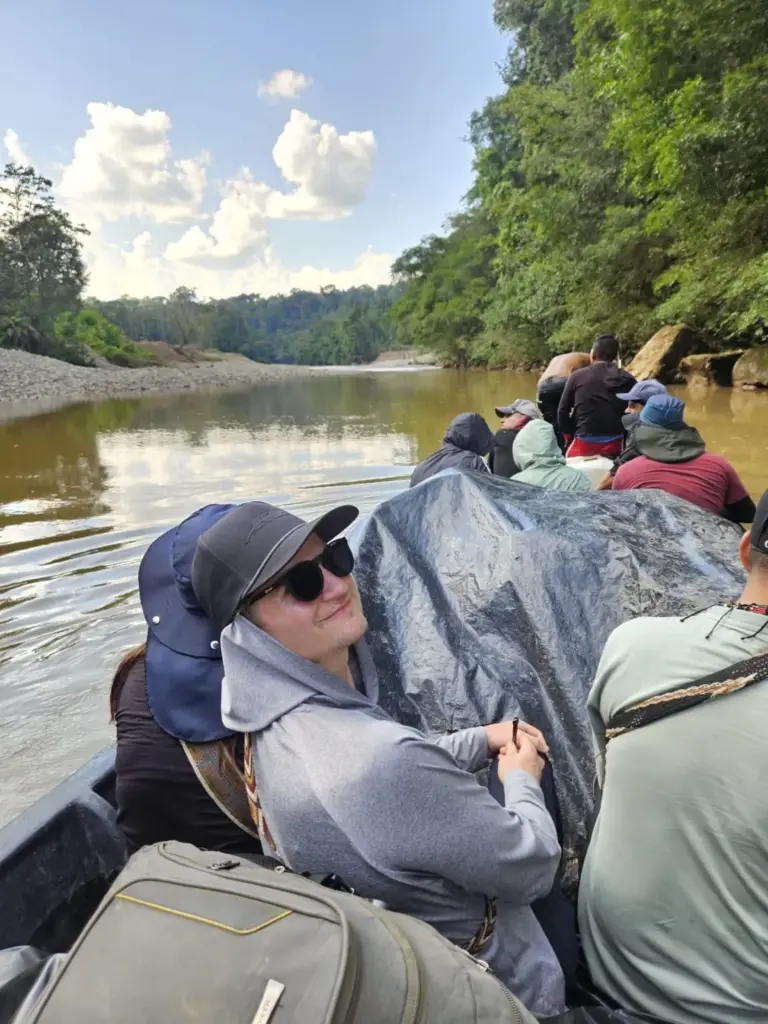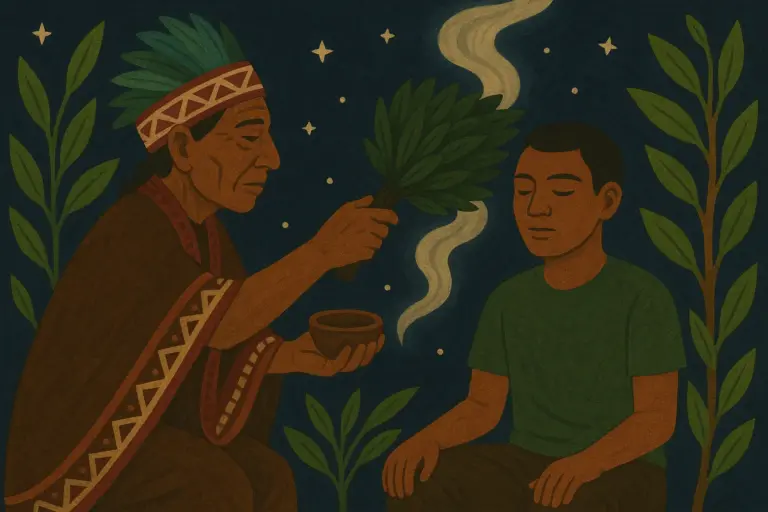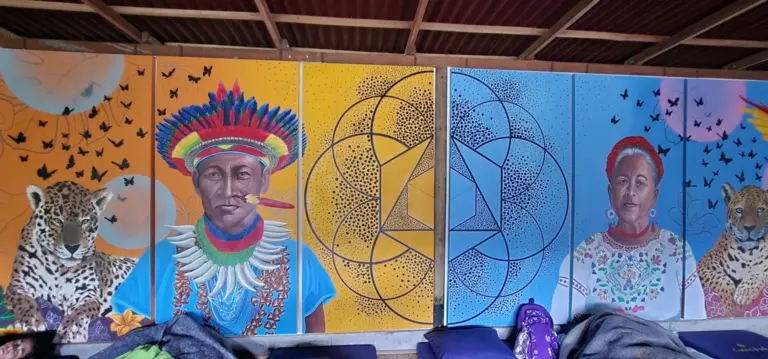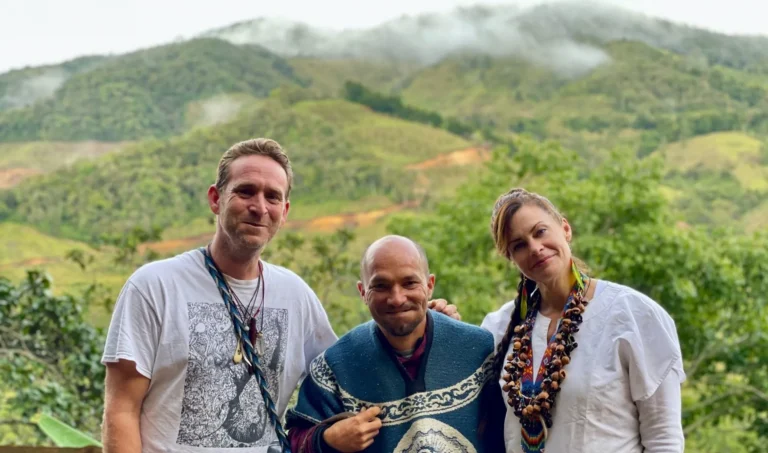Ayahuasca Diet: Absolute Guide to Purify Your Body and Mind for Ceremony
The ceremony begins the moment you commit to the journey, not when you drink the medicine. This truth, passed down through generations of Colombian Taitas, reminds us that preparation is sacred work—a bridge between your everyday life and the profound healing that awaits.
If you’re reading this, you’re likely feeling a mix of excitement and uncertainty about preparing for your first ayahuasca ceremony, or perhaps seeking clearer guidance after conflicting information online. You’re not alone in this confusion. The internet overflows with rigid rules, mystical proclamations, and intimidating restriction lists that can leave you feeling overwhelmed before you even begin.
Here’s what we’ve learned from years of guiding people through authentic yagé ceremonies in the Colombian Andes: preparation should feel like self-care, not punishment. The ayahuasca diet—or more accurately, the dieta—is not about perfection or fear-based restriction. It’s about creating the safest, most receptive conditions for healing while honoring the indigenous wisdom that has guided this medicine for thousands of years.
This guide will give you practical, grounded advice rooted in traditional Colombian yagé practices and modern safety understanding. No mystical language, no overwhelming lists—just clear guidance from people who have walked this path and want to help you prepare with confidence and respect.
Understanding the Ayahuasca Dieta: More Than Just Food
Before we dive into what to eat and avoid, let’s clarify something important: the word “diet” doesn’t capture the full meaning of what we’re discussing. In Spanish, “dieta” encompasses a broader concept of disciplined preparation that includes not just food, but also mental, emotional, and spiritual readiness.
Traditional Colombian Yagé Preparation
In the mountains of Colombia, where yagé has been used ceremonially for over a thousand years, preparation begins weeks before ceremony. Traditional Taitas understand that the medicine works most effectively when the body is clean, the mind is clear, and the spirit is open to receiving guidance.
Colombian yagé traditions differ from the better-known Peruvian ayahuasca practices in several important ways. While Peruvian traditions often emphasize lengthy plant dietas lasting months, Colombian Taitas typically focus on shorter, more intensive preparation periods that honor the realities of modern life while maintaining the essential safety and spiritual elements.
The foods traditionally avoided in Colombian yagé preparation include fermented chicha, aged meats, and certain strong-flavored plants that might interfere with the medicine’s action. However, the emphasis has always been on what nourishes and supports the body rather than creating fear around food.
Modern Safety Considerations
Related readings: Authentic Ayahuasca Retreat in Colombia; Ayahuasca Safety Guide; Best Place to Drink Ayahuasca in Medellín; A Healing Journey is Not a Straight Line; About Camino al Sol.
Today’s understanding of ayahuasca safety adds an important layer to traditional wisdom: the interaction between the medicine’s MAOI (monoamine oxidase inhibitor) compounds and certain foods and medications. This isn’t mystical—it’s biochemistry, and it’s crucial for your safety.
The vine Banisteriopsis caapi contains natural MAOIs that allow the DMT in the accompanying plants to become orally active. These same MAOIs can interact dangerously with foods high in tyramine—a compound found in aged, fermented, or spoiled foods. When MAOIs and tyramine combine, they can cause dangerous spikes in blood pressure.
This is why modern ayahuasca preparation includes specific dietary guidelines that weren’t necessary for indigenous peoples, whose traditional diets naturally avoided most problematic foods. Your body, adapted to a Western diet, needs different preparation than someone raised on traditional Amazonian foods.
The good news? These restrictions are temporary, reasonable, and designed to keep you safe while maximizing the medicine’s effectiveness.
What to Eat: Nourishing Your Journey
Let’s start with the positive—what you CAN and SHOULD eat during your ayahuasca diet preparation. This approach honors the Colombian tradition of viewing preparation as nourishment rather than deprivation.
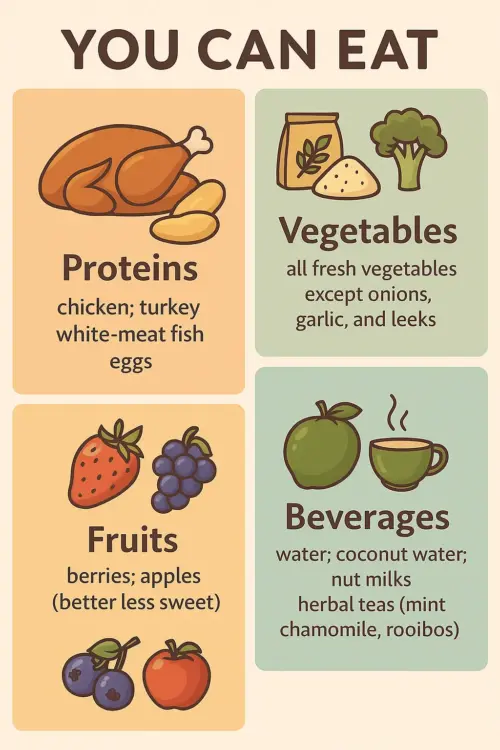
Colombian Traditional Foods
The foods that have sustained Colombian indigenous communities for generations offer perfect guidance for ayahuasca preparation. These simple, whole foods provide steady energy while avoiding the compounds that might interfere with the medicine.
Plantain serves as a cornerstone of Colombian preparation diets. Rich in potassium and easy to digest, plantain can be boiled, baked, or grilled. Green plantain provides sustained energy, while ripe plantain offers natural sweetness when you’re craving something more satisfying.
Yuca (cassava) provides another excellent foundation food. This starchy root vegetable fills you up without overwhelming your digestive system. Boiled yuca with a little salt makes a simple, satisfying meal that connects you to the traditional foods of the region where your ceremony will take place.
Fresh fish from Colombian rivers and coasts offers clean protein that’s easy to digest. Grilled or steamed fish with simple seasonings provides the nutrients your body needs without the complications of aged or processed proteins.
Practical Meal Planning
Building your meals around these foundation foods during your ayahuasca diet doesn’t have to be complicated or expensive. Here’s how to create satisfying, nourishing meals during your preparation:
Breakfast options: Start your day with oatmeal topped with fresh banana, or scrambled eggs with a side of boiled plantain. Herbal teas like chamomile or mint provide gentle hydration without caffeine.
Lunch and dinner: Build meals around rice or quinoa with steamed vegetables and a simple protein like fresh fish or eggs. Season with fresh herbs like cilantro or parsley, and add healthy fats from avocado or olive oil.
Snacks: Fresh fruits like bananas, apples, or pears satisfy sweet cravings naturally. A handful of unsalted nuts or seeds provides protein and healthy fats between meals.
The key is simplicity. Your digestive system will thank you for choosing foods that are easy to process, leaving more energy available for the deeper work of ceremony.
The Essential Ayahuasca Diet Guidelines
Now let’s walk through the timeline of preparation, understanding that flexibility and intention matter more than rigid perfection.
Two Weeks Before: Foundation Building
This initial phase focuses on gradually eliminating the substances that pose the greatest risks or interfere most significantly with the medicine’s action.
Eliminate completely: Alcohol deserves special attention here. Beyond the obvious MAOI interactions, alcohol affects your liver’s ability to process the medicine effectively and can interfere with the emotional and spiritual openness that ceremony requires. If you regularly consume alcohol, stopping two weeks before ceremony gives your body time to clear these effects completely.
Recreational drugs, including marijuana, should also be eliminated during this period. While cannabis doesn’t pose the same physical dangers as alcohol, it can create a mental fog that interferes with the clarity and presence that ceremony requires.
Sexual activity is traditionally avoided during preparation, not from moral judgment, but because orgasm releases many of the same neurotransmitters that ayahuasca works with. Preserving this energy is believed to enhance the medicine’s effectiveness.
Reduce gradually: Begin cutting back on processed foods, excessive sugar, and heavy meals. This isn’t about perfection—it’s about moving in the direction of cleaner, simpler eating. If you normally eat fast food daily, reducing to once or twice this week is progress.
Add mindfully: Begin incorporating meditation, intention-setting, or simple breathing practices into your daily routine. Start thinking about why you’re called to this ceremony and what you hope to learn or heal.
One Week Before: Deepening the Practice
This is when the dietary guidelines become more specific, focusing on the foods most likely to interact dangerously with the medicine’s MAOI compounds.
Aged and fermented foods top the avoidance list during this crucial week. This includes aged cheeses (the older the cheese, the higher the tyramine content), fermented soy products like miso and soy sauce, and cured meats like salami or pepperoni.
Overripe or spoiled foods should be avoided completely. That banana that’s gotten too brown or the leftovers that have been in your fridge for several days could contain elevated tyramine levels.
Chocolate and cacao require special attention. While small amounts of high-quality dark chocolate might be acceptable early in the week, it’s safest to eliminate all chocolate products during the final few days before ceremony.
Sample daily meal plan:
– Morning: Oatmeal with fresh banana and herbal tea
– Midday: Rice bowl with steamed vegetables and grilled fish
– Evening: Quinoa soup with fresh herbs and a side of boiled yuca
– Snacks: Fresh apple slices, unsalted almonds, or herbal tea
24–48 Hours Before: Final Preparation
The final phase of preparation focuses on foods that are light, easily digestible, and unlikely to cause any stomach upset during ceremony.
Stick to the simplest versions of the foods you’ve been eating: plain rice, steamed vegetables, fresh fruits, and plenty of water. This isn’t the time to try new foods or eat large meals.
Many people find that eating lightly during this period actually feels good—your body is preparing for the deep work ahead, and heavy foods can feel burdensome.
Hydration becomes especially important during these final hours. Drink plenty of clean water, but avoid overhydrating immediately before ceremony, as you’ll want to minimize bathroom trips during the experience.
Common Challenges and How to Navigate Them
Real life rarely unfolds as neatly as preparation guidelines suggest. Here’s how to handle the most common challenges people face during their ayahuasca diet preparation.
Social Situations and Family Meals
Explaining your dietary restrictions to friends and family can feel awkward, especially if they don’t understand your reasons for participating in ceremony. You don’t owe anyone a detailed explanation of your spiritual choices, but having a simple response ready can help.
Try something like: “I’m doing a cleanse before a wellness retreat” or “I’m following a specific diet for health reasons.” Most people will respect your boundaries without requiring extensive details.
When eating out becomes necessary, focus on restaurants where you can easily identify safe options. Grilled fish with rice and steamed vegetables is available at most restaurants. Don’t be afraid to ask for modifications—most kitchens can prepare simple foods without problematic seasonings or sauces.
Cravings and Emotional Eating
As you eliminate familiar foods, you might notice cravings that feel more emotional than physical. This is normal and actually part of the preparation process. The foods we crave often serve as emotional regulators, and removing them can bring underlying feelings to the surface.
Instead of fighting these cravings, try to understand what they’re telling you. Are you stressed about the upcoming ceremony? Anxious about changes in your life? These emotions might be exactly what the medicine wants to help you explore.
Gentle alternatives can help: herbal tea when you crave coffee, fresh fruit when you want sugar, or a warm bath when you want to reach for comfort food.
Travel and Preparation Logistics
If you’re traveling to Colombia for your ceremony, maintaining your ayahuasca diet preparation while navigating airports and unfamiliar foods requires some planning.
Pack safe snacks for travel days: nuts, dried fruit (without sulfites), and energy bars made with simple ingredients. Research restaurants near your accommodation that can provide simple, safe meals.
Remember that stress about perfect adherence to the diet can be more harmful than minor dietary slip-ups. Do your best, stay hydrated, and trust that your sincere intention to prepare properly matters more than perfection.
Foods to Avoid: Understanding the Why
For medical background on MAOIs and tyramine, see this overview from the Mayo Clinic.
Knowledge empowers better choices than fear-based rules. Here’s why certain foods are restricted during ayahuasca preparation, helping you make informed decisions rather than blindly following prohibitions.
High-Tyramine Foods
Aged cheeses like blue cheese, aged cheddar, or parmesan contain high levels of tyramine that develop during the aging process. Fresh cheeses like mozzarella or cottage cheese contain much lower levels and may be acceptable early in your preparation.
Cured and processed meats including salami, pepperoni, hot dogs, and bacon are preserved using methods that increase tyramine content. Fresh, simply prepared meats are generally safe if consumed early in the preparation period.
Fermented foods like sauerkraut, kimchi, miso, and soy sauce are created through fermentation processes that naturally produce tyramine. While these foods are healthy under normal circumstances, they pose risks when combined with MAOIs.
Stimulants and Mood-Altering Substances
Caffeine deserves special consideration because it’s so prevalent in modern diets. While small amounts of caffeine early in your preparation might be acceptable, eliminating coffee, tea, and energy drinks during the final week helps prevent interactions and allows your natural energy rhythms to emerge.
Alcohol must be completely eliminated not just for MAOI safety, but because it interferes with the liver’s ability to process the medicine effectively. Even small amounts can impact your ceremony experience significantly.
Foods That May Cause Digestive Upset
Spicy foods can irritate your digestive system and make the physical aspects of ceremony more uncomfortable. The purging that often accompanies ayahuasca is easier to handle when your stomach isn’t already irritated.
Heavy, fatty foods require significant digestive energy and can make you feel sluggish during ceremony. Save the rich meals for after your integration period.
Artificial additives including preservatives, artificial colors, and flavor enhancers can affect sensitive individuals more strongly during the heightened awareness that follows ceremony preparation.
Integration: Carrying Dietary Wisdom Forward
The ayahuasca diet offers more than just ceremony preparation—it provides a window into how food affects your body, mind, and spirit. Many people discover that the simple, whole foods they eat during preparation actually make them feel better than their normal diet.
How Preparation Diet Becomes Lifestyle Practice
Pay attention to how different foods make you feel during your preparation period. Do you have more stable energy when you eat simple, whole foods? Does eliminating processed foods improve your sleep or mood? These insights can guide healthier choices long after your ceremony.
The mindfulness required for diet preparation—reading labels, planning meals, choosing nourishing options—can become a form of ongoing self-care. You’re learning to treat your body as the sacred vessel it is, worthy of high-quality fuel and conscious attention.
Long-term Benefits Beyond Ceremony
Many ceremony participants report that their relationship with food changes permanently after experiencing how good they feel on a clean, simple diet. The cravings for processed foods often diminish, replaced by genuine hunger for foods that truly nourish.
This isn’t about maintaining rigid restrictions forever, but about developing a more conscious, appreciative relationship with what you eat. Food becomes medicine, fuel, and pleasure rather than just habit or emotional regulation.
“The Real Ceremony is Life Itself” Philosophy
At Camino al Sol, we believe that ceremony is not a separate event but a doorway into living more consciously every day. The discipline and mindfulness you develop during diet preparation can extend into all areas of your life—how you speak to yourself, how you treat your relationships, how you approach challenges.
The ayahuasca diet teaches you that small, consistent choices compound into significant transformation. This lesson extends far beyond food into every aspect of conscious living.
Frequently Asked Questions
Ready to Begin Your Journey?
Preparing for ayahuasca ceremony is an act of courage and self-love. By taking the time to prepare your body properly, you’re demonstrating respect for the medicine, the tradition, and your own healing journey.
Remember that the goal isn’t perfection—it’s sincere effort and conscious preparation. The medicine works with your intention as much as your dietary discipline. Trust the process, be gentle with yourself, and know that thousands of people have walked this path before you.
At Camino al Sol, we’re here to support you through every step of your preparation and integration. Our experienced team understands both the traditional wisdom and modern safety requirements that make for successful, transformative ceremonies.
If you have questions about your specific situation, dietary restrictions, or preparation concerns, don’t hesitate to reach out. We believe that proper preparation is the foundation of profound healing, and we’re committed to helping you approach your ceremony with confidence and clarity.
The path of the medicine is calling you forward. Trust yourself, prepare consciously, and open your heart to the healing that awaits.
Ready to take the next step? Contact us to discuss your ayahuasca ceremony preparation, or learn more about our retreats in the Colombian Andes.

